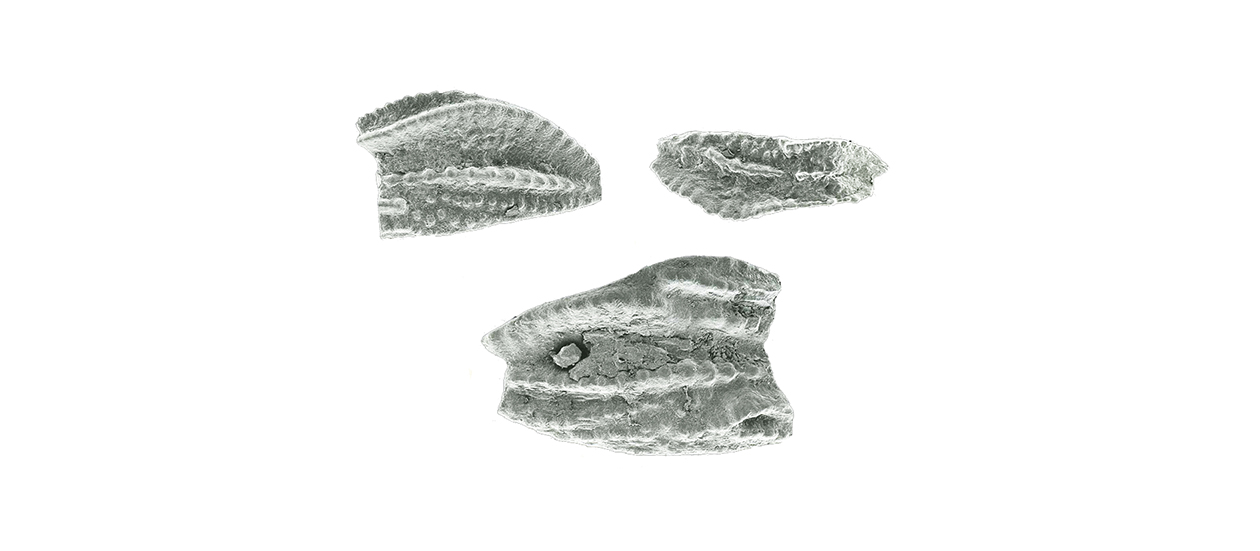Siphonodella sandbergi Klapper, 1966
Sugerowana cytacja: Moczyński 2016. Siphonodella sandbergi Klapper 1966. Ikonoteka (http://ikonoteka.paleo.pan.pl/xwiki/bin/view/Species/Siphonodella+sandbergi)
Diagnoza In the P1 elements tubercles are arranged in longitudinal rows and ridges at the posterior part of the plafform are parallel to its margin. Porównanie According to the original description, the type series shows an extremely short free blade but this has not been observed in the Polish material. The inner area of the platform in P1 elements remains ribbed, which makes them different from later Siphonodella with a smooth corresponding part of the platform, where only irregular tubercles may develop. In this respect they me similar to apparently much younger American S. obsoleta and S. isosticha. Four other species of Siphonodella have been identified in the type sample by Klapper (1966), namely S. cooperi, S. obsoleta, S. quadruplicata, and S. sexplicata. This makes either homogeneity of the sample or taxonomic identifications of those species unlikely (perhaps both). The meaning of S. sandbergi thus remains to be clarified. Autekologia
Występowanie geograficzne Zasięg czasowy Tournaisian Materiały muzealne ZPAL Literatura Dzik, J. 1997. Emergence and succession of Carboniferous conodont and ammonoid communities in the Polish part of the Variscan sea. Acta Palaeontologica Polonica 42, 57-170. |
|

